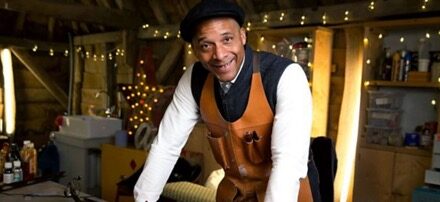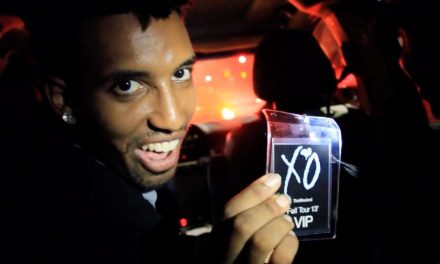It’s that time of year again. The streets are festooned with lights, mulled wine is on the menu in my local pub, and television is inundated with Christmas ads. We tend not to write that much about advertising in Television Studies, leaving that to Business and Marketing Studies while focusing our attention on the ‘proper’ programmes. Yet adverts make up a significant proportion of television content and play a particularly important role in the economy of television. They really do deserve more attention from Television Studies scholars. Indeed, it is my contention that the Christmas ads can tell us much about the contemporary state of television and the television industry more broadly.

Perhaps one of the biggest challenges facing the contemporary television industry is the threat to advertising spend. New media technologies make it far easier for us to avoid broadcast ads while also offering new sites for more targeted and potentially engaging advertising campaigns. There has been much fear within the television industry that advertisers will turn away from television in favour of the more targeted, flexible and interactive possibilities of online advertising. Indeed, the Financial Times claim that advertising spend online increased 17.5% in the first six months of 2013 to more than £3bn and advertising agencies are increasingly looking to exploit the affordances of the internet to engage consumers with their clients’ brands. The carefully orchestrated transmedia campaigns of this year’s biggest Christmas ads would seem to point to the decline of the 30-second spot advertisement and with it the historical basis of commercial television funding.
The John Lewis Christmas campaign, created by Adam & Eve/DDB, is probably the clearest example of this phenomenon. Since its return to Christmas advertising in 2007, the John Lewis ad has become something of a Christmas event, much anticipated, at least in ad-land. This year the campaign, named ‘The Bear and the Hare’, launched with a teaser trailer broadcast during Agatha Christie’s Poirot on 6 November that showed an animated picture of a sleeping bear with the hashtag #sleepingbear.

This triggered the start of an extensive social media campaign where you could follow the central characters from the campaign, an animated bear (@JohnLewisBear) and hare (@JohnLeewisHare). The posts include updates on the activities of the animals in the forest in the lead up to Christmas, usually accompanied with photos and calls to action, such as asking people to suggest which panto the forest animals should put on. The tweets also responded to audience engagement with the campaign, such as retweeting a child’s drawing of Bear and Hare and a picture of a Bear and Hare cake from a shop window in Wimbledon. On 15 November, ‘The Bear and Hare’ topped Campaign’s most-shared Viral Chart.

John Lewis also created an installation in London’s Southbank where teaser clips of the ad were projected. The full ad then premiered online with subscribers to John Lewis receiving an email with a link to a 2-minute version of the ad on the John Lewis website (it was also posted on YouTube). The email not only encouraged shoppers to view the ad, but also to buy the merchandise, including links to Bear and Hare toys, a Christmas book, alarm clock and wrapping paper.

And it also included opportunities to participate by making your own Christmas cards featuring Bear and Hare and downloading the interactive ebook app in which the story featured in the advert is extended and narrated by Lauren Lavern. John Lewis also offered opportunities to interact directly through ‘Bear’s Cave’ installations in eleven of its stores around the country. Here you could sit and watch the extended, narrated version of the ad and have your picture taken with bear, as I did just last week (all in the interests of research, of course).

The ad itself is a piece of transmedia content, featuring the animated story of a hare that awakens its friend the bear from hibernation so that he can join in the Christmas festivities with all of his woodland friends, edited to a Lilly Allen cover of Keane’s Somewhere Only We Know.
The song quickly got to number one after being made available to download at midnight after the ad launched. In many ways, then, the ad acted as a music video and promo for the single. Indeed Eamonn Forde at The Guardian claimed that soundtracking the biggest Christmas ads might now be more desirable than claiming the Christmas No.1 spot, arguing that the John Lewis ad was a canny move by Lilly Allen in her attempted come-back to pop music. As well as functioning as a music promo, the ad also has explicit links to cinema, with the Disneyeque hand-drawn animation led by Disney animator Aaron Blaise, who previously worked on Lion King and Pochahontas. There is even a making-of video that positions the ad as an innovative piece of narrative filmmaking akin to a movie, rather than a piece of advertising.
The making-of video positions the ad as combining innovative new animation techniques with traditional hand-drawn animation that harks back to those childhood associations of animation with Christmas.
This association of the Christmas ad with cinema is apparent, albeit in quite different ways, in two other high profile Christmas campaigns this year. Marks and Spencer’s ‘Magic and Sparkle’ ad (created by RKCR/Y&R) is a fantasy-inspired romp through a series of movie references. It starts with model Rosie Huntington-Whitely falling down a manhole into the Mad Hatter’s tea party from Alice in Wonderland, before she moves seamlessly (in a giddying array of M&S clothes and underwear) through Red Riding Hood and Aladdin to culminate in a Wizard of Oz finale with Helena Bonham-Carter playing the wizard.
The ad can be viewed at the marksandspencertv channel on YouTube, indicative of the ways in which brands are seeking to position themselves as content owners in the digital era. Alongside the ad itself, is a (rather hilarious) making of video (as well interviews) in which the celebrity stars discuss their approach to their characters and their excitement at being involved in the project as if it were a Hollywood blockbuster. As with the John Lewis campaign there was also an interactive social media element here with viewers being invited to suggest a name for the dog featured in the ad.
Sainsbury’s Christmas ad (engineered by ad agency AMV BBDO) draws on the kudos of cinema in a rather different way. The supermarket chain funded filmmaker Kevin Macdonald to create a 50-minute film based on over 360 minutes of home movie footage submitted by 114 families, in the style of Macdonald’s earlier film Life in a Day. The film premiered on 28th November at BAFTA in London before being posted on YouTube on 29th November. Rather than promoting the brand’s products (as the Marks and Spencer ad does) or emulating the spirit of Christmas as a time of sharing (as the John Lewis ad does), the Sainsbury’s ad prefers to present a seemingly more ‘authentic’ picture of Christmas in Britain, not shying away from the difficulties that this time of year can bring. Sainsbury’s gave Macdonald complete editorial freedom in creating the film, which even features a kitchen full of ingredients from another well-known supermarket, the Co-Operative!
Each of these advertising campaigns point to the ways in which the boundaries between ‘advertising’ and ‘content’ are becoming increasingly blurred. The John Lewis ad is indicative of a broader attempt by brands to position themselves as content owners. John Lewis haven’t simply created an advertising campaign, but a transmedia franchise designed to sell an array of merchandise as much as to promote the store itself. The M&S ad similarly points to the ways in which brands are repositioning themselves as content owners with their own online ‘television channel’ featuring a range of short-form content, from the Christmas ad and its making-of videos, to a lingerie buying guide for men and a tutorial on how to wrap odd-shaped presents.

Meanwhile the Sainsbury’s campaign can be understood as part of a larger trend in advertiser-funded content in which advertisers are emerging as an increasingly important source of funding for the production of films and television programmes. These campaigns also reveal the role that online is playing in contemporary advertising, both as a form of distribution and as a way of generating interaction with consumers.
While all of this might seem to support arguments about the declining significance of television as a medium, this would be to overlook the central part that television played in these campaigns. Although the full-length Sainsbury’s film premiered at BAFTA, the campaign actually launched two weeks earlier with a 3 and a half minute version of the film premiering during Coronation Street on 13th November and then running in 40 and 60 second cut down versions on television over the following weeks.
Similarly, although the John Lewis campaign launched online, the lynchpin of the campaign was its television premiere. The Guardian claimed that John Lewis spent £750,000 on buying a 2-minute ad break within The X-Factor in which to premiere ‘The Bear and the Hare’. Indeed, the trade press suggest that £5m of the campaign’s £7m budget was spent on media-buying for television, with £1m spent on producing the ad and the other £1m spent on supporting media, such as press, online and cinema. This points to the continued significance of television for advertisers as the most effective way of reaching mass audiences. Indeed, John Lewis’ Marketing Director Craig Inglis claimed that the social media activities around ‘The Bear and the Hare’ were about creating chatter and intrigue that would guide viewers to the TV launch within X-Factor. Rather than seeing the online campaign as competing with television, these campaigns reveal the ways in which television and new media exist in a cooperative relationship, with television driving online viewing and vice versa. As Inglis argues,
Social media and TV work hand in hand. We recognise that our social media users are closer to the brand and so we want to engage with them. But we’ll never drop TV. The ROI [return on investment] we get is significant and it drives conversations around the country.
In fact shows like The X-Factor are valuable for advertisers not only because they generate high ratings, but also because they generate social chatter online that advertisers can attempt to monopolise.
In terms of the ads themselves, Campaign’s readers’ survey puts the Sainsbury’s campaign top, followed by John Lewis’ ‘The Hare and the Bear’, while Marks and Spencer’s offering was seen to fall short of the mark. While Campaign criticize M&S for its emphasis on glitz and luxury at a time when its consumers are in a recession, I think the ad is most problematic in its representation of its central female character as a helpless mannequin who embodies problematic ideals of female beauty and seems to have no ability to be self-determining at all. Meanwhile, my suspicion is that ad-land loves Sainsbury’s and John Lewis’ campaigns for not being like ads, for their aspiration to cinema and transmedia franchising respectively. And this points to an ongoing tension in any discussion of advertising perhaps epitomized in the following exchange in the comment section of a Guardian article asking readers to vote on the top Christmas ads of 2013:

Of course, SueEllenMishky is correct that these adverts are precisely designed to have affective force with the intention of driving sales. And it will ultimately be sales through which their effectiveness is evaluated by their clients. But to dismiss them simply because they act in the service of commercialism is akin to dismissing all television programmes simply as a means to sell audiences to advertising. It is to overlook the ways in which these texts have affective power and meanings (both potentially positive and problematic) that extend beyond those intended by the agencies that produced them. Indeed, I have a friend (who shall remain nameless) who revealed that he can’t go to the ‘Bear and Hare’ grotto on the third floor of John Lewis if he is feeling a bit vulnerable for fear of bursting into tears. For my part, my response is closer to that of Private Eye whose front cover is this rather glorious parody of what would actually happen if a rabbit woke a bear from his hibernation on Christmas day.

But what I find particularly fascinating about these texts is precisely the ways in which they are drawing on conventions and cultural associations from cinema and television in ways that potentially challenge the boundary markers that Television Studies has traditionally placed around its objects of study and invite us to reassess the distinctions that we might make between the programmes ‘proper’ and the advertising content that sits around them. As advertisers try increasingly hard to engage audiences they remind us that advertising is not just about the hard sell and that there is a history of adverts functioning as engaging pieces of short-form content. They invite us to look more closely at advertising both as texts in their own right and as strategic interventions within the industrial landscape of television. With the television industry increasingly looking towards generating new relationships with advertisers we are likely to see far more instances of advertiser-funded content, such as the Sainsbury’s ad, that upsets any easy distinction between ads and editorial content. At the same time, consumer brands are going to continue to position themselves as content owners, borrowing from the promotional, narrative and aesthetic strategies of film and television to engage consumers as audiences. Far from solely understanding contemporary television advertising as a narrative of decline in which ad revenues are moving away from television and onto online, these Christmas ads point to the ways in which advertisers are attempting to emulate television’s continued ability to create eventfulness around its most significant programmes. Online is not in competition with television here but rather functions in a symbiotic interrelationship designed to maximise engagement with the campaign across multiple sites, much like transmedia television. As Television Scholars we should really be paying more attention to these changes to advertising for what they reveal about the shifting dynamics of television and the television industry in the digital era.
Catherine Johnson is Associate Professor in Film and Television at the University of Nottingham. She is the author of Branding Television (Routledge, 2012) and Telefantasy (British Film Institute, 2005) and the co-editor of Transnational Television History (Routledge, 2012) and ITV Cultures: independent television over fifty years (Open University Press, 2005). She is currently working on a co-authored book (with Paul Grainge) titled The Promotional Screen Industries (Routledge).





